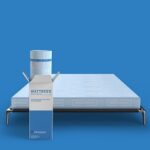Introduction
The McGraw Edison 450A is a cornerstone of power distribution systems, blending efficiency, reliability, and safety into one robust package. It is widely used across industrial, commercial, and residential settings, proving its versatility and high-performance capabilities. This article provides an in-depth exploration of the McGraw Edison 450A, covering its features, benefits, applications, installation process, troubleshooting, and maintenance. Whether you’re considering purchasing this device or optimizing its use, this comprehensive guide will serve as your go-to resource.
What Is the McGraw Edison 450A?
The McGraw Edison 450A is a power distribution device designed to handle electrical loads of up to 450 amperes. Known for its reliability, it is a preferred choice for managing high-demand power systems efficiently and safely.
Developed by McGraw Edison, a trusted name in electrical systems, the 450A model has gained recognition for its durability and adaptability. It serves as a critical component in ensuring stable power supply in factories, commercial buildings, and residential complexes.
Key Features of the McGraw Edison 450A
Understanding the McGraw Edison 450A’s key features can help you appreciate its capabilities. Here’s what makes this device stand out:
1. High Current Capacity
The McGraw Edison 450A is designed to handle up to 450 amperes, making it suitable for demanding electrical systems. This capability helps prevent overloads in high-power environments.
2. Durability
Constructed with industrial-grade materials, the 450A is built to withstand harsh conditions. It is resistant to wear, tear, and environmental factors like humidity and dust.
3. Safety Compliance
The 450A meets international safety standards. It includes built-in safety mechanisms like circuit breakers and overload protection, ensuring secure operation.
4. Versatile Applications
The Edison 450A is adaptable to various settings, from industrial plants to residential complexes. It is also compatible with other electrical components for seamless integration.
Applications of the McGraw Edison 450A
The Edison 450A finds its place in diverse sectors. Here’s where and how it is used:
1. Industrial Applications
- Factory Power Systems: Ensures stable electricity for running heavy machinery.
- Energy Distribution: Balances power loads in industrial setups.
2. Commercial Applications
- Office Buildings: Supports HVAC systems, elevators, and lighting networks.
- Retail Spaces: Maintains uninterrupted power for large-scale operations.
3. Residential Applications
- Apartments and Condominiums: Distributes power efficiently in multi-unit housing.
- Emergency Systems: Provides reliable backup during outages.
Advantages of the McGraw Edison 450A
The Edison 450A offers multiple benefits that make it a valuable investment:
1. Enhanced Efficiency
The device optimizes power distribution to minimize energy loss. It increases overall system performance and reduces downtime, making it highly efficient.
2. Long-Term Cost Savings
The Edison 450A is built to last, which reduces the need for frequent replacements. It also has low maintenance requirements, translating to savings in operational expenses.
3. Improved Safety
This model reduces the risks of electrical hazards like short circuits or overloads. It includes advanced protective mechanisms for user safety.
4. Environmental Friendliness
The device is designed to minimize energy waste, which aligns with sustainability goals. Its eco-friendly features help reduce the carbon footprint of energy systems.
Technical Specifications
A closer look at the Edison 450A’s specifications helps users better understand its technical capabilities:
| Feature | Specification |
| Current Rating | 450 Amperes |
| Voltage Support | Up to 600V |
| Material | Industrial-grade metals and heat-resistant components |
| Safety Mechanisms | Overload protection, circuit breakers |
| Weight | Varies by configuration |
Installation of the McGraw Edison 450A
Installing the Edison 450A requires careful planning and execution. Below is a step-by-step guide:
1: Preparation
Gather all necessary tools and components. Verify that the electrical system’s requirements match the 450A’s specifications.
2: Positioning
Mount the device on a stable and level surface. Ensure adequate spacing for ventilation and easy access.
3: Electrical Connections
Connect the input and output terminals using appropriate wiring. Secure connections to prevent loose ends that can cause faults.
4: Testing
Power on the system and monitor for irregularities. Test all safety mechanisms like breakers and fuses.
5: Final Adjustments
Make necessary adjustments to optimize performance. Label all connections for easy future reference.
Maintenance Tips for the McGraw Edison 450A
Regular maintenance is essential for extending the lifespan and ensuring the efficiency of the Edison 450A. Follow these maintenance tips:
1. Routine Inspections
Check for signs of wear and tear on wiring and connectors. Inspect the unit for overheating or unusual noises.
2. Cleaning
Remove dust and debris from the unit using a soft, dry cloth. Avoid using harsh chemicals that might damage sensitive components.
3. Load Testing
Perform periodic load tests to ensure the device operates within safe limits. Adjust load distribution as needed to prevent strain.
4. Replacing Components
Replace any worn-out parts immediately to avoid further damage. Use original manufacturer parts for compatibility and safety.
Common Issues and Troubleshooting
While the Edison 450A is highly reliable, occasional issues may arise. Here’s a troubleshooting guide:
| Problem | Possible Cause | Solution |
| Overheating | Excessive load or poor ventilation | Reduce load and improve airflow. |
| Tripped Circuit Breakers | Overload or short circuit | Inspect circuits and adjust the load. |
| Unstable Power Output | Loose connections or faulty wiring | Tighten connections or replace wires. |
| Reduced Efficiency | Dust buildup or worn components | Clean unit and replace damaged parts. |
McGraw Edison 450A vs. Competitors
To make an informed decision, consider how the Edison 450A compares to similar products:
| Feature | McGraw Edison 450A | Competitor A | Competitor B |
| Current Capacity | 450 Amperes | 400 Amperes | 500 Amperes |
| Durability | High | Moderate | High |
| Safety Features | Advanced | Basic | Advanced |
| Cost-Effectiveness | Excellent | Moderate | High |
Conclusion
The McGraw Edison 450A stands out as a dependable and efficient solution for power distribution in diverse settings. From its robust design and high safety standards to its versatility and ease of maintenance, this device delivers exceptional value.
By understanding its features, applications, installation, and maintenance requirements, users can ensure the Edison 450A performs optimally for years. Whether for industrial, commercial, or residential use, this device proves to be a worthy investment for reliable power management.
Frequently Asked Questions (FAQs)
What industries commonly use the McGraw Edison 450A?
Industries like manufacturing, construction, and real estate frequently utilize this device due to its efficiency and reliability.
How do I know if the McGraw Edison 450A is the right choice for my needs?
Assess your power requirements and compare them with the device’s specifications. It is suitable for systems requiring up to 450 amperes.
Is it easy to maintain the McGraw Edison 450A?
Yes, routine inspections and cleaning can ensure long-lasting performance with minimal effort.
Can I install the McGraw Edison 450A without professional help?
Professional installation is recommended to ensure safety and optimal performance.
Does the Edison 450A come with a warranty?
Most units come with a warranty ranging from one to three years, depending on the supplier.
What makes the McGraw Edison 450A environmentally friendly?
Its design minimizes energy waste, aligning with sustainability practices.






